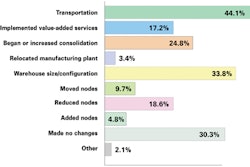
Dramas hold many parallels with design. Designers solve problems to produce desired outcomes. In the case of consumer packaged goods, the objective of design is that these desired outcomes make life a little easier or otherwise more convenient for consumers in some way.
“Design is really a way of looking at the world with an eye toward changing it,” says Warren Berger, the author of “GLIMMER: How design can transform your life, and maybe even the world” (The Penguin Press, ISBN-978-1-59420-233-9, 2009).
Berger, an award-winning journalist and book author who writes about advertising and design, as well as for publications including The New York Times Magazine, came to that conclusion after interviewing about 100 designers from all walks of life. These design experts’ thoughts form the basis for “Glimmer.”
Start with a possibility
Designers, Berger says, ply their trade by looking at a challenge in a fresh way and foreseeing a possibility—just a glimmer, at first—of how things might be done differently. In each case, the designer completes a series of actions, guided by a common set of principles, which are all part of a larger established process. Using anecdotes and case studies, “Glimmer” shares stories about people who exhibit these attributes and describes how they led to ingenious new product designs.
In the world of packaging, the impact of the look, the feel, the scent, and sometimes even the sound of a carton or bottle has been playing a much bigger role for the past decade or so in marketing brands and helping to generate sales. Yet the work of designers still remains underappreciated and even is held in a bit of contempt in some corners of the industry.
It’s easy to conclude that based on Berger’s research, such wariness about the motives behind design is pure folly. Anyone in any industry should challenge himself or herself to think like a designer. The results, he concludes, would be far better for having done so.
If you overlay Berger’s premise onto the packaging scene, it makes sense that thinking like a designer can benefit the marketer, the production line manager, the contract packager, the materials supplier. But how? In his book, Berger argues that such thinking requires a willingness to question assumptions in the belief that there is a better way to do it. That flies in the face of the approach that unfortunately remains all too familiar in too many consumer packaged goods companies. Package design often is treated as an afterthought; the package is the thing that the product goes in. Instead of being an equal partner with product development at the beginning of the creative process, package development often is a hastily planned and sometimes poorly executed final step.
Expect and embrace failure
Moreover, Berger maintains, design is an iterative process. Failure is expected, and designers are comfortable with it as a bump in the road to greater accomplishments. Berger calls this train of thought “failing forward.” On the packaging side, this notion would have greater influence if design had a seat at the table much earlier in the process.
In “Glimmer,” Berger finds four other areas that are hallmarks of people who think like designers: They don’t automatically accept the status quo, they care, they are adept at making mental connections that lead to radically fresh ideas, and they make commitments by giving form to their ideas.
I found Berger’s many case studies to be crisply written and inspirational. There are lessons to be learned from his conclusions that with a bit of thought can readily apply across the packaging universe. •Playwright David Mamet says all dramas involve a hero or a heroine solving a problem. Even when they don’t succeed, they learn something that propels them to the next scene in the storyline.
Dramas hold many parallels with design. Designers solve problems to produce desired outcomes. In the case of consumer packaged goods, the objective of design is that these desired outcomes make life a little easier or otherwise more convenient for consumers in some way.
“Design is really a way of looking at the world with an eye toward changing it,” says Warren Berger, the author of “GLIMMER: How design can transform your life, and maybe even the world” (The Penguin Press, ISBN-978-1-59420-233-9, 2009).
Berger, an award-winning journalist and book author who writes about advertising and design, as well as for publications including The New York Times Magazine, came to that conclusion after interviewing about 100 designers from all walks of life. These design experts’ thoughts form the basis for “Glimmer.”
Start with a possibility
Designers, Berger says, ply their trade by looking at a challenge in a fresh way and foreseeing a possibility—just a glimmer, at first—of how things might be done differently. In each case, the designer completes a series of actions, guided by a common set of principles, which are all part of a larger established process. Using anecdotes and case studies, “Glimmer” shares stories about people who exhibit these attributes and describes how they led to ingenious new product designs.
In the world of packaging, the impact of the look, the feel, the scent, and sometimes even the sound of a carton or bottle has been playing a much bigger role for the past decade or so in marketing brands and helping to generate sales. Yet the work of designers still remains underappreciated and even is held in a bit of contempt in some corners of the industry.
It’s easy to conclude that based on Berger’s research, such wariness about the motives behind design is pure folly. Anyone in any industry should challenge himself or herself to think like a designer. The results, he concludes, would be far better for having done so.
If you overlay Berger’s premise onto the packaging scene, it makes sense that thinking like a designer can benefit the marketer, the production line manager, the contract packager, the materials supplier. But how? In his book, Berger argues that such thinking requires a willingness to question assumptions in the belief that there is a better way to do it. That flies in the face of the approach that unfortunately remains all too familiar in too many consumer packaged goods companies. Package design often is treated as an afterthought; the package is the thing that the product goes in. Instead of being an equal partner with product development at the beginning of the creative process, package development often is a hastily planned and sometimes poorly executed final step.
Expect and embrace failure
Moreover, Berger maintains, design is an iterative process. Failure is expected, and designers are comfortable with it as a bump in the road to greater accomplishments. Berger calls this train of thought “failing forward.” On the packaging side, this notion would have greater influence if design had a seat at the table much earlier in the process.
In “Glimmer,” Berger finds four other areas that are hallmarks of people who think like designers: They don’t automatically accept the status quo, they care, they are adept at making mental connections that lead to radically fresh ideas, and they make commitments by giving form to their ideas.
I found Berger’s many case studies to be crisply written and inspirational. There are lessons to be learned from his conclusions that with a bit of thought can readily apply across the packaging universe.






















